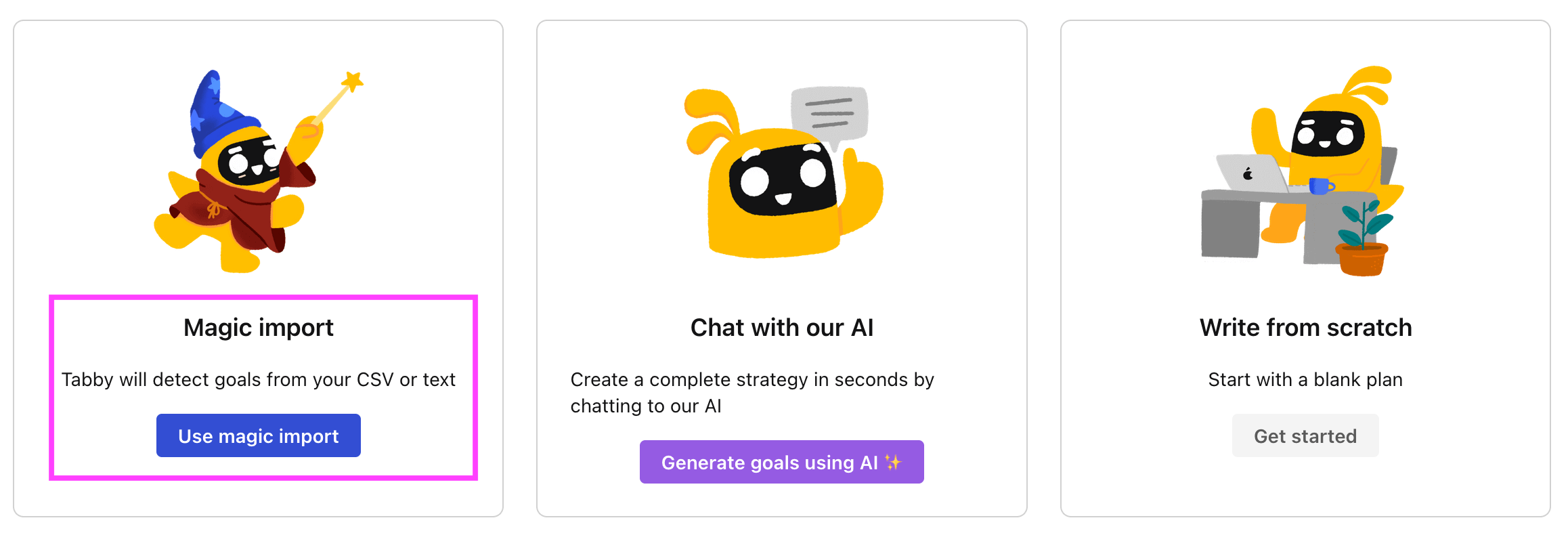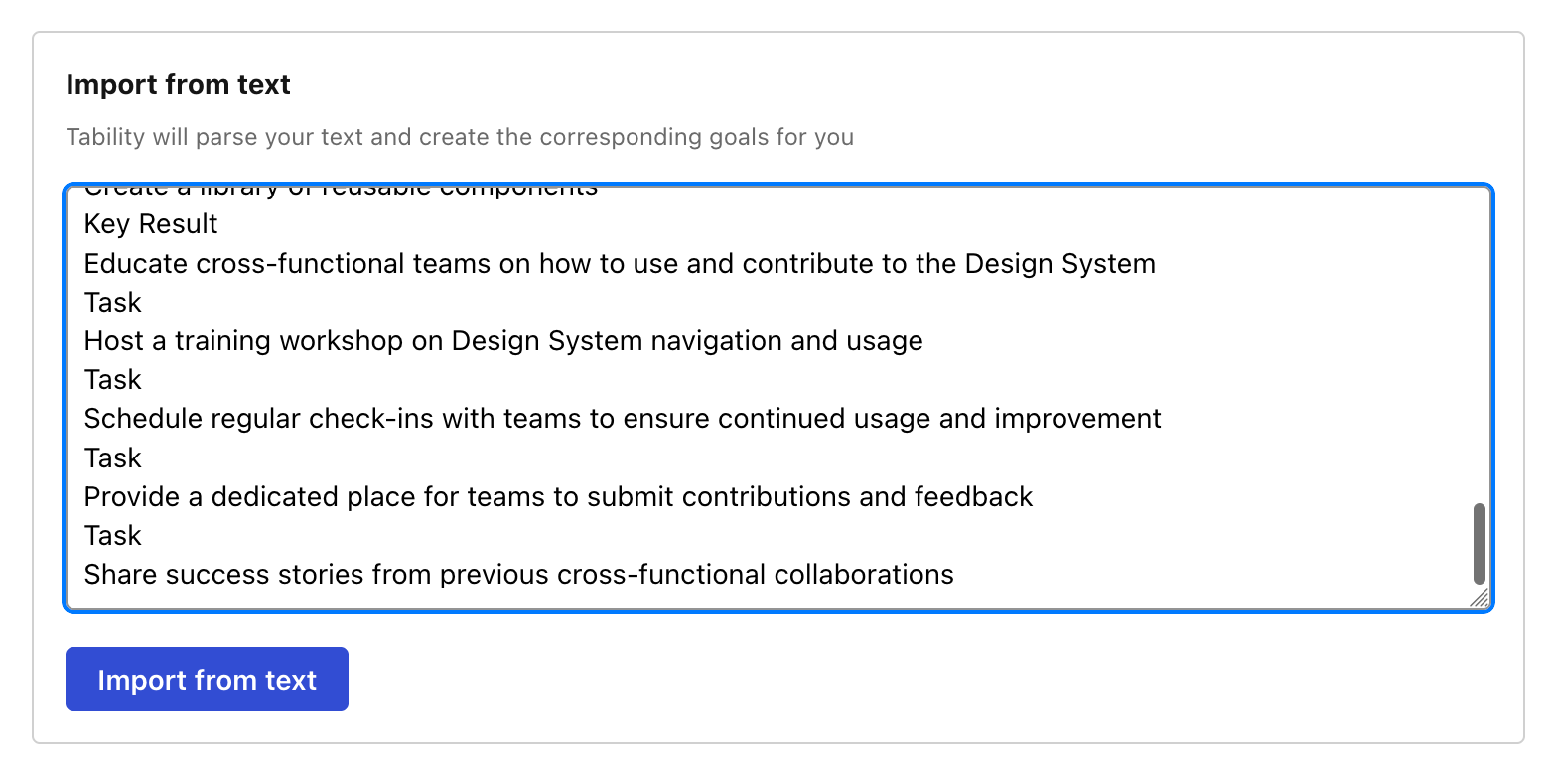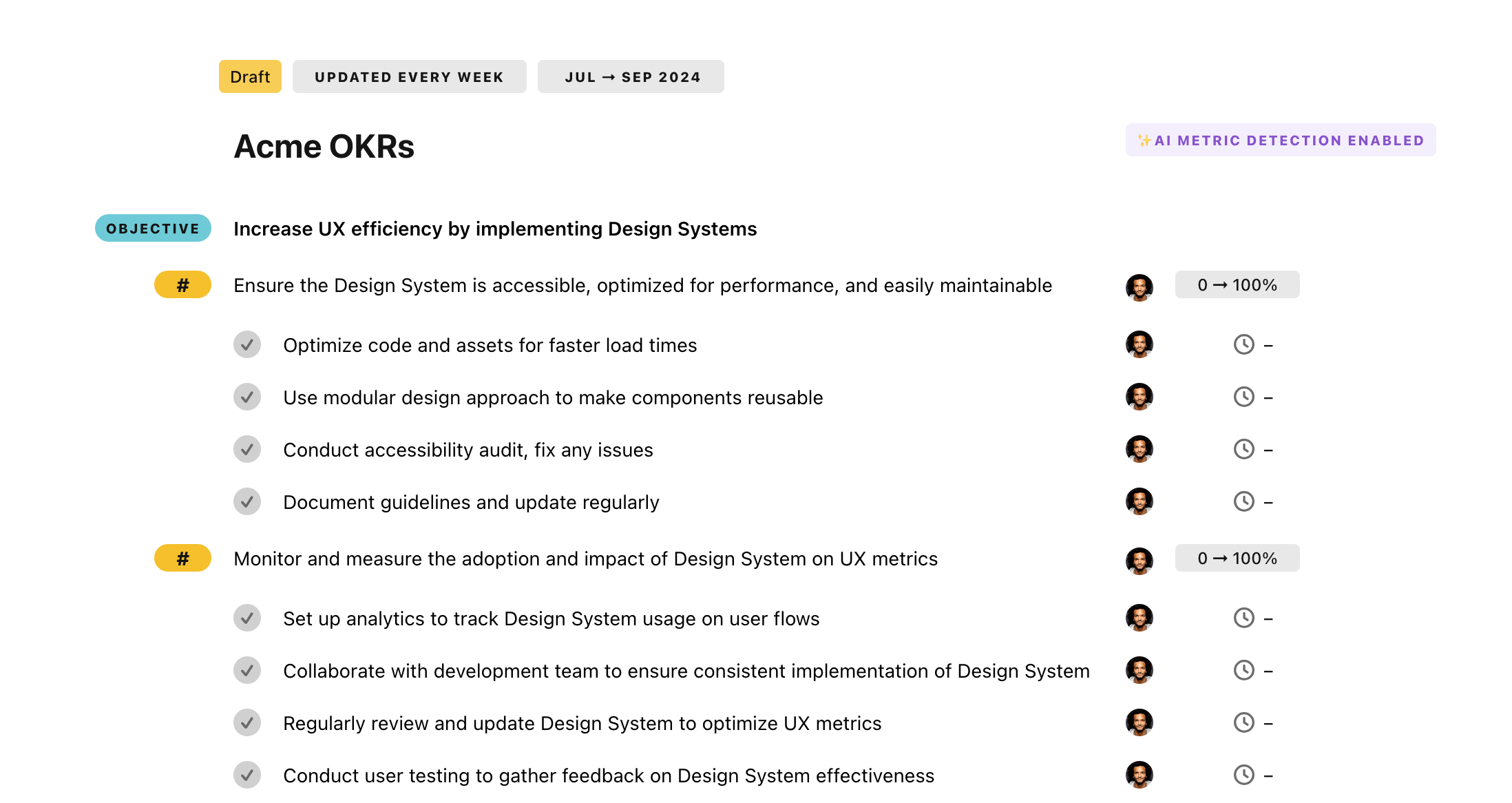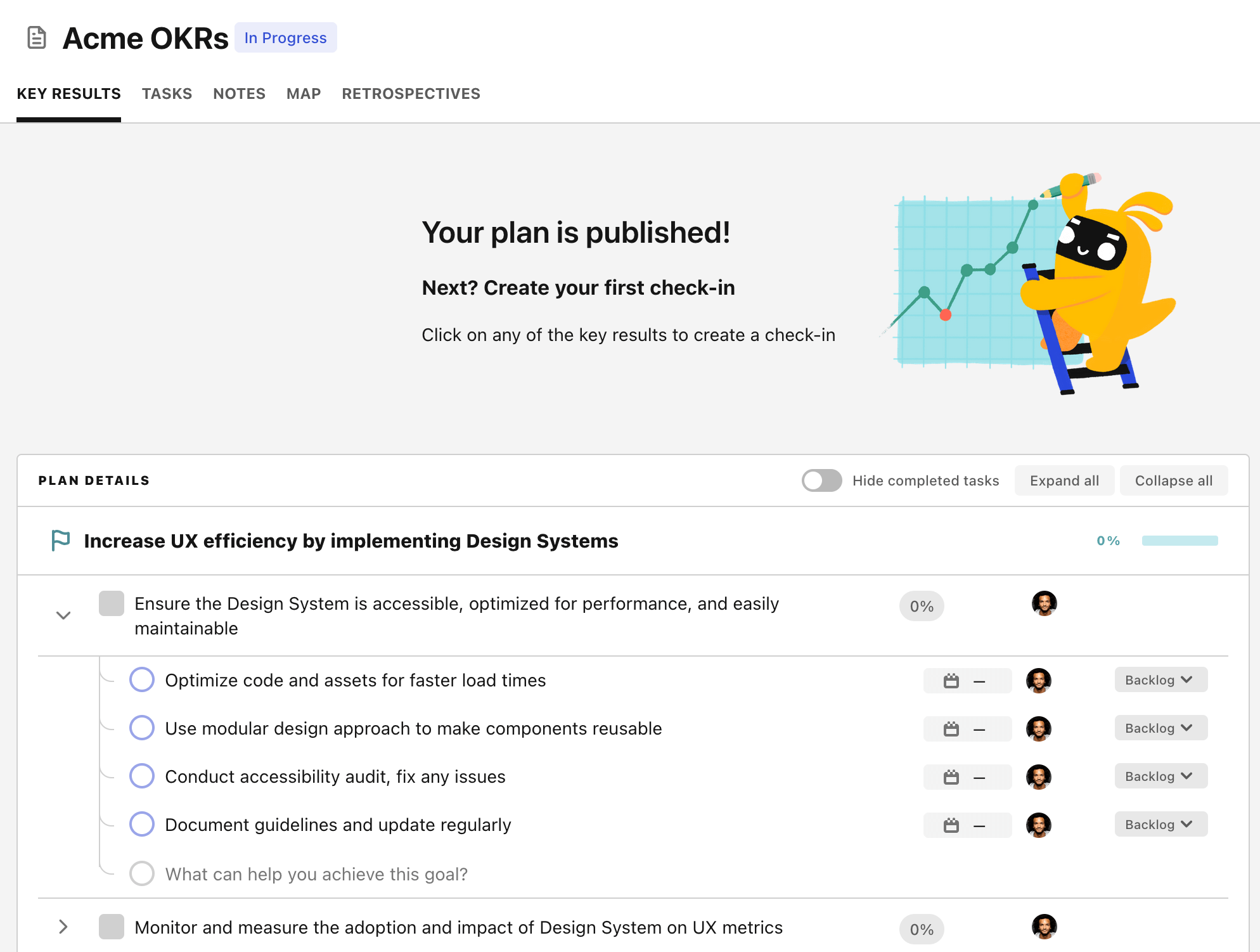OKR template to maintain continuous operation of critical facilities and equipment
Your OKR template
The OKR aims for an aggressive improvement of 30% in repair team response to equipment failures. Actions include improving the communication structure among team members, comprehensive training on rapid repair approaches, and regular equipment maintenance. These are to provide faster fault resolution and downtime reduction.
The objective also includes a need to achieve a monthly average of 95% operational efficiency for all critical infrastructure. Crucial initiatives towards this goal are the establishment of key performance indicators, training workers in best practices for operations, and routine maintenance of all vital infrastructure.
Overall, the OKR seeks to improve operational efficiency, repair team responsiveness and system maintenance by implementing proactive strategies. The approach is hands-on, requiring team collaboration, timely decision-making, and continuous skill development for a robust and reliable system operation.
ObjectiveMaintain continuous operation of critical facilities and equipment
KRImplement routine checks to find and rectify faults within 24 hours
Define faults and their rectification methods
Train team in fast fault identification
Develop a daily schedule for routine checks
KRImprove response time of repair teams to equipment failures by 30%
Implement an effective communication structure among the team members
Provide comprehensive training on rapid repair strategies
Undertake regular equipment maintenance and checkups
KRAchieve a monthly average of 95% operational efficiency for all critical infrastructure
Establish key performance indicators to measure efficiency
Train staff on best operational practices
Implement routine maintenance procedures for all critical infrastructure
How to edit and track OKRs with Tability
You'll probably want to edit the examples in this post, and Tability is the perfect tool for it.
Tability is an AI-powered platform that helps teams set better goals, monitor execution, and get help to achieve their objectives faster.
With Tability you can:
- Use AI to draft a complete set of OKRs in seconds
- Connect your OKRs and team goals to your project
- Automate reporting with integrations and built-in dashboard
Instead of having to copy the content of the OKR examples in a doc or spreadsheet, you can use Tability’s magic importer to start using any of the examples in this page.
The import process can be done in seconds, allowing you to edit OKRs directly in a platform that knows how to manage and track goals.
Step 1. Sign up for a free Tability account
Go tohttps://tability.app/signup and create your account (it's free!)
Step 2. Create a plan
Follow the steps after your onboarding to create your first plan, you should get to a page that looks like the picture below.

Step 3. Use the magic importer
Click on Use magic import to open up the Magic Import modal.
Now, go back to the OKR examples, and click on Copy on the example that you’d like to use.

Paste the content in the text import section. Don’t worry about the formatting, Tability’s AI will be able to parse it!

Now, just click on Import from text and let the magic happen.

Once your example is in the plan editor, you will be able to:
- Edit the objectives, key results, and tasks
- Click on the target 0 → 100% to set better target
- Use the tips and the AI to refine your goals
Step 4. Publish your plan
Once you’re done editing, you can publish your plan to switch to the goal-tracking mode.

From there you will have access to all the features that will help you and your team save hours with OKR reporting.
- 10+ built-in dashboards to visualise progress on your goals
- Weekly reminders, data connectors, and smart notifications
- 9 views to map OKRs to strategic projects
- Strategy map to align teams at scale